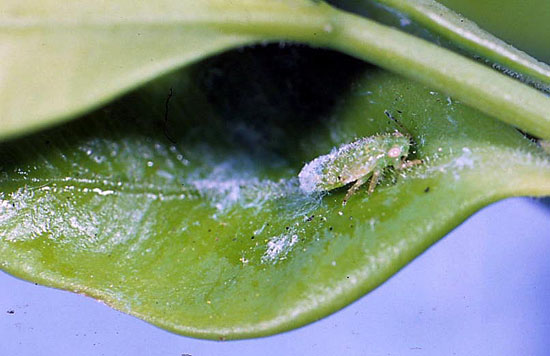Issue 6, May 28, 2010
Boxwood Psyllid
Boxwood psyllid, Psylla buxi, can be found feeding on boxwood in many portions of Illinois. Boxwood psyllids are small (1/16-inch), grayish green insects that are normally covered with a white, waxy, filamentous secretion that partially covers the body, providing protection from parasitoids and sprays of pest-control materials. Winged adults appear in late May and June. They can be seen flying around plants. Females insert, between or under bud scales, spindle-shaped, orange eggs during early summer. Boxwood psyllid overwinters as an egg.
Eggs hatch into yellowish nymphs that begin feeding as soon as buds begin to open in early spring. The first-instar nymphs feed by sucking plant fluids from terminal leaves as they unfold and expand in spring. Their feeding causes leaves to yellow, curl, and form a cup, which conceals and protects the nymphs. There is one generation per year.

Acephate (Orthene), carbaryl (Sevin), insecticidal soap, and horticultural oil can be used for control. Particularly with insecticidal soap and horticultural oil, coverage within the cupped leaves is essential to be sure that the nymphs are directly contacted with the insecticide. Acephate and carbaryl are laminar systemics, they will move into the leaves to kill the psyllids feeding on them.--Phil Nixon
Author:
Phil Nixon